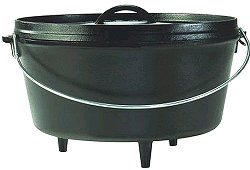Civil War Soup Recipes
Fruit Cake Recipe  The Confederate Cookbook: Family Favorites from the Sons of Confederate Veterans 340 of Dixie's finest recipes courtesy of contemporary Confederate kitchens from Florida to Alaska. Here you'll find the delicious, traditional dishes that evoke the flavour of the Old South, as well as savoury regional favourites from all over the country. Fascinating historic anecdotes and previously unpublished, nostalgic sepia-toned images of identified Confederate soldiers are here for maximum visual appeal, along with easy-to-use instructions for making memorable dishes |
When you make any kind of soup, particularly portable, vermicelli or brown gravy soup or any other that has herbs or roots in it, always observe to lay the meat in the bottom of your pan with a good lump of butter. Cut the herbs and roots into small pieces and lay them over the meat; cover it close and set it over a very slow fire: it will draw all the virtue out of the roots and herbs, turn it to a good gravy and give the soup a very different flavor than if you first put it in water. When your gravy is almost dried up, fill the pan with water; when it begins to boil, take off the fat and follow the directions of your recipe for whatever sort of soup you re making. Soup Meat To make the soup very good, the meat (of which there should be a large proportion, rather more than a pound to a quart of water) must remain in till it drops entirely from the bones and is boiled to rags. But none of these fragments and shreds should be found in the tureen when the soup is sent to table; they should all be kept at the bottom of the pot, pressing down the ladle hard upon them when you are dipping out the soup. If any are seen in the soup after it is taken up, let them be carefully removed with a spoon. To send the soup to table with bits of bone and shreds of meat in it is a slovenly, disgusting, and vulgar practice, and should be strictly forbidden, as some indifferent cooks will do so to save themselves the trouble of removing it. A mass of shreds left at the bottom of the tureen absorbs so much of the liquid as to diminish the quantity of the soup; and if eaten, is very unwholesome, all the nourishment being boiled out of it.
[Godey's - November, 1861]
Stock The basis of all well-made soups is composed of what English cooks call “stock” or broth made from all sorts of meat, bones and the remains of poultry or game; all of which may be put together and stewed down in the “stock-pot,” the contents of which are by the French termed Consommé. Then add a tablespoonful and a half of curry powder, and mix it up well. Now cut up the beef into pieces about an inch square; pour in from a quarter to a third of a pint of milk, and let it simmer for thirty minutes; then take it off and pace it in a dish with a little lemon-juice. While cooking, stir it constantly to prevent burning. Send it to the table with a wall of mashed potatoes or rice around it.
[There are several varieties of stock, such as “brown,” “gravy” and “ white”. .]
[ Godey’s - February, 1861]
Gumbo Soup Cut up a chicken or any fowl as if to fry and break the bones; lay it in a pot with just enough butter to brown it a little; when browned, pour as much water to it as will make soup for four or five persons; add a thin slice of lean bacon, an onion cut fine and some parsley. Stew it gently five or six hours; about twenty minutes before it is to be served, make a thickening by mixing a heaping tablespoonful of sassfra leaves, pounded fine, in some of the soup and adding it to the rest of the soup; a little rice is an improvement. If the fowl is small, two will be required, but one large pullet [a hen of the domestic chicken less than a year old] is sufficient.
[ Godey’s - April, 1861]
Curry Soup Season two quarts of strong veal broth with two onions, a bunch of parsley, salt and pepper; strain it and have ready a chicken (or game bird) cut in joints and skinned; put it in the broth with a tablespoonful of curry powder; boil the chicken(s) till quite tender. A little before serving, add the juice of a lemon and a teacupful of boiling cream. Serve boiled rice to eat with this soup. Always boil cream before putting it in soup or gravy.
[Godey’s - March, 1861] Venison Soup Take four pounds of freshly-killed venison, cut off from the bones, and one pound of ham in small slices. Add an onion, minched, and black pepper to your taste. Put only as much water as will cover it and stew it gently for an hour, keeping the pot closely covered. Skim it well and pour in a quart of boiling water. Add a head of celery cut small (can substitute with celery seed) and three blades of mace [an East Indian spice: an aromatic spice consisting of the dried external fibrous covering of a nutmeg]. Boil it gently two hours and a half; then put in a quarter of a pound of butter, cut small and rolled in flour, and half a pint of port or Madeira. Let it boil a quarter of an hour longer and send it to the table with the meat in it.
[Godey’s - March, 1861]
|
Civil War Songs
Confederate Johnny Cake Recipe
History of Colored Troops
Civil War Picture Album
Summary of the Civil War
Women in the Civil War
Civil War Exhibits
| Civil War Recipes: Recipes from the Pages of Godey's Lady's Book Civil War Recipes reproduces, in their original wording, receipts that appeared in the pages of Gody's Lady's Book during the decade of the Civil War. Editors Lily May Spaulding and John Spaulding have added annotations to assist those cooks who might not know, for example, that “buscuits” often referred to what we now call “cookies.” They also provide a brief overview of the technical state of cooking in America before and during the Civil War. Although leavening agents were not unknown, the recipe for “Christening Cake” requires whisking the whites of sixteen eggs into a full froth and beating the entire mixture for more than thirty minutes. |
Kindle Available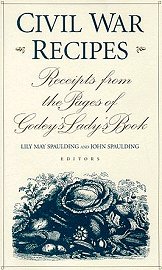 |
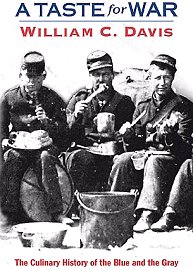 |
A Taste For War: The Culinary History of the Blue and the Gray We know the uniforms they wore, the weapons they carried, and the battles they fought, but what did they eat and, of even greater curiosity, was it any good? Now, for the very first time, the food that fueled the armies of the North and the South and the soldiers' opinions of it--ranging from the sublime to just slime--is front and center in a biting, fascinating look at the Civil War as written by one of its most respected historians. There's even a comprehensive "cookbook" of actual recipes included for those intrepid enough to try a taste of the Civil War. |
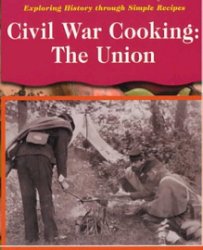 |
Civil War Cooking: The Union The authors look at the foods people ate during the Civil War and on pioneer farms and offer recipes for modern readers. Each title begins with rules for kitchen safety, a metric conversion table, and an illustrated list of cooking equipment. Color is a marvelous feature of the books: the covers, maps, and page borders. Full-color photos and reproductions appear on every page. |
Civil War Cookbook: A Unique Collection of Traditional Recipes and Anecdotes from the Civil War Period Every Civil War buff will want to own this unique cookbook, which takes the reader right into the kitchens of 19th-century America. Illustrated with wonderful period photographs, it intertwines history and food for a fascinating new look at the lives of Civil War soldiers and their families. Traditional recipes, illustrated with full-color photographs and highlighted with historical anecdotes, include instructions for recreating treats sent in care packages to soldiers in the field, camp dishes, and special meals. |
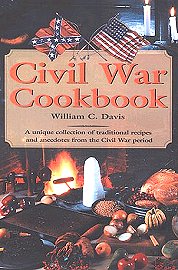 |
